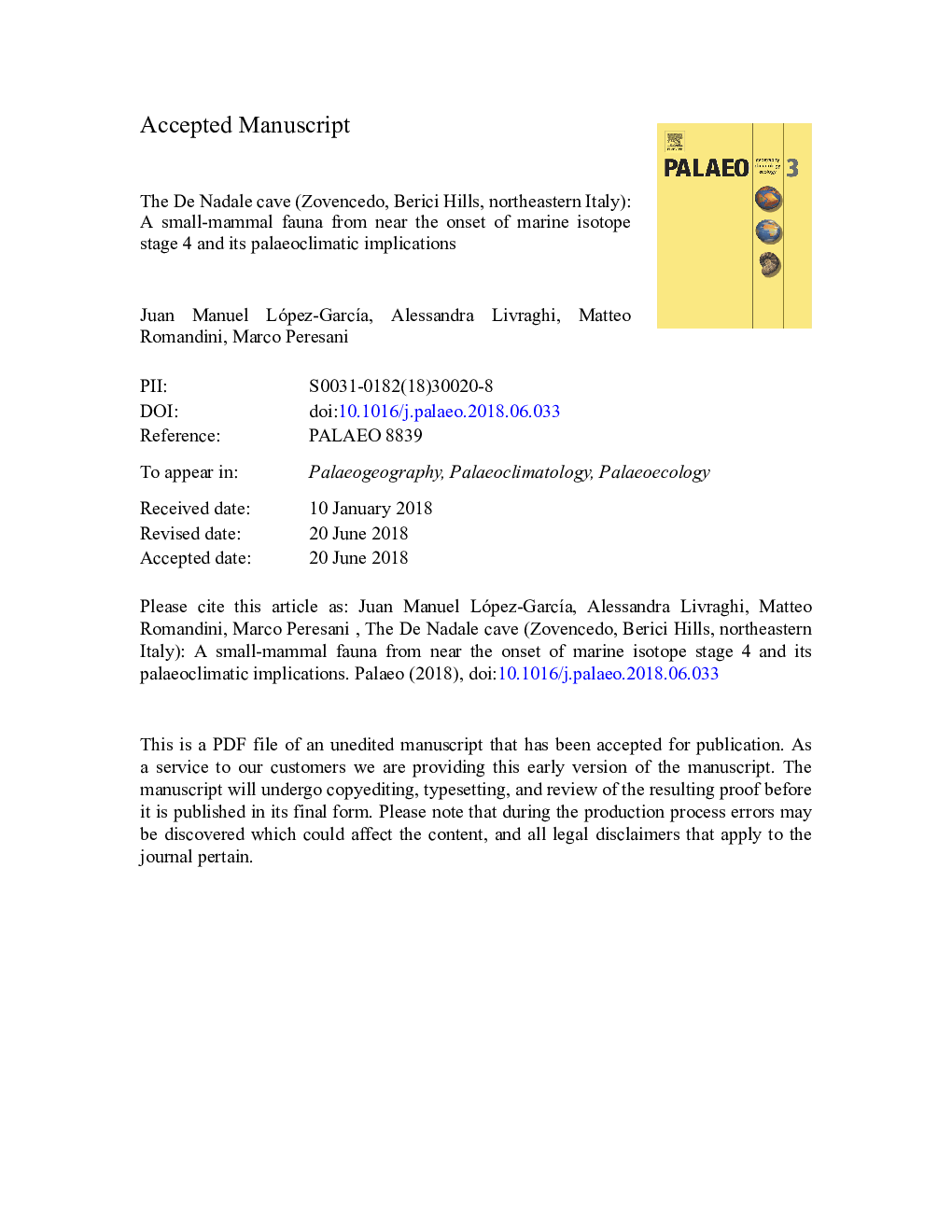| Article ID | Journal | Published Year | Pages | File Type |
|---|---|---|---|---|
| 8868106 | Palaeogeography, Palaeoclimatology, Palaeoecology | 2018 | 29 Pages |
Abstract
Marine Isotope Stage 4 (MIS 4; ca. 71-57â¯ka) is not well documented in European continental contexts and is characterized mainly by minimum summer insolation, producing a maximum extension of the polar ice caps during the Late Pleistocene together with a lowering of the sea level in the Northern Hemisphere. The De Nadale Cave site, located at an altitude of 130â¯m a.s.l. in the Berici Hills in northeastern Italy, contains a single archaeological layer (Unit 7) dated to MIS 4. In this paper, we present a palaeoenvironmental and palaeoclimatic reconstruction based on small-mammal (insectivore, bat and rodent) assemblages from this layer. Habitat weighting and bioclimatic model methods were used in order to reconstruct the palaeoenvironmental and palaeoclimatic conditions. The results identify a cold climatic period with a landscape dominated by open woodland formations and open-dry habitats, dating to near the beginning of MIS 4. The findings are consistent with studies of large mammals and previously reported pollen studies in terrestrial sequences of this age in Italy and in cores from the offshore Mediterranean basin. Given the scarcity of terrestrial data for MIS 4, the De Nadale Cave constitutes an important site for our knowledge of the environment and climate of this period.
Related Topics
Physical Sciences and Engineering
Earth and Planetary Sciences
Earth-Surface Processes
Authors
Juan Manuel López-GarcÃa, Alessandra Livraghi, Matteo Romandini, Marco Peresani,
